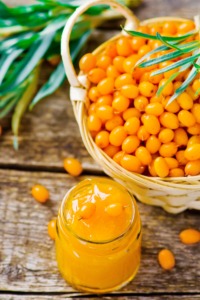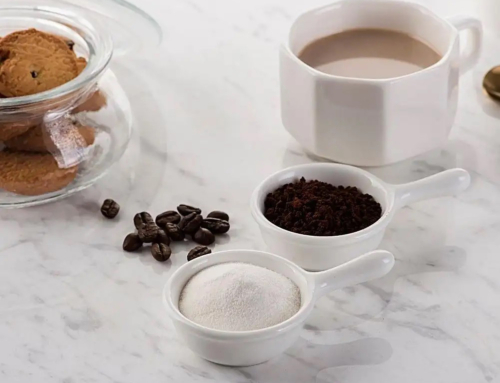Sea buckthorn can be applied in numerous food products. The most popular products include sea buckthorn juices, jams, pwder, wines, pies, soft capsules and tablets.
 Due to the high acidity, sea buckthorn fruits can be used to make refreshing drinks, while sea buckthorn leaves are used in teas. Due to the high acidity and astringency, sea buckthorn fruit could be unpleasant to eat raw. There are different compounds responsible for unpleasant taste of sea buckthorn berry. Malic and quinic acids are the main representatives among organic acids which contribute to pungency.
Due to the high acidity, sea buckthorn fruits can be used to make refreshing drinks, while sea buckthorn leaves are used in teas. Due to the high acidity and astringency, sea buckthorn fruit could be unpleasant to eat raw. There are different compounds responsible for unpleasant taste of sea buckthorn berry. Malic and quinic acids are the main representatives among organic acids which contribute to pungency.
To avoid that, some manufacturers use malolactic acid fermentation to lower its content. Another substance responsible for lowering pleasantness is ethyl-β-D-glucosidase. Overripe sea buckthorn juice has higher content of ethyl-β-D-glucosidase, which results in a significantly more bitter taste. Ratios between contents of various compounds impact astringency and bitterness more significantly than the amounts of individual variables, such as proanthocyanidin dimers or quercetin glycosides.
The rich spectrum of bioactive compounds in sea buckthorn has inspired researchers to investigate the application of its various parts in food. The nutritional properties of H. rhamnoides can boost the abilities of probiotic bacteria in gut. Sea buckthorn berry can improve physicochemical properties, an aroma enriched with terpenes and carbonyl compounds, and with a higher probiotic cell population. The same bacteria strain was used to fortify frozen yoghurt, with sea buckthorn berries as the immobilization carrier.
Sea buckthorn berry powder can be used as natural additives to replace artificial supplements. In one study, after being incorporated as ingredients in pork sausages, sea buckthorn berry powder strongly inhibited lipid oxidation during storage, prolonging shelf life.
Sea buckthorn has also been applied in alcoholic beverages. Sea buckthorn wine has been found to exert a protective effect against phorone-induced oxidative stress and hypercholesterolemia induced by a high-cholesterol diet. Reduced hepatic lipid peroxidation and increased superoxide dismutase activity were also observed. The reason for this high-performance is wine contained high levels of rutin, myricetin, and quercetin.


Leave A Comment